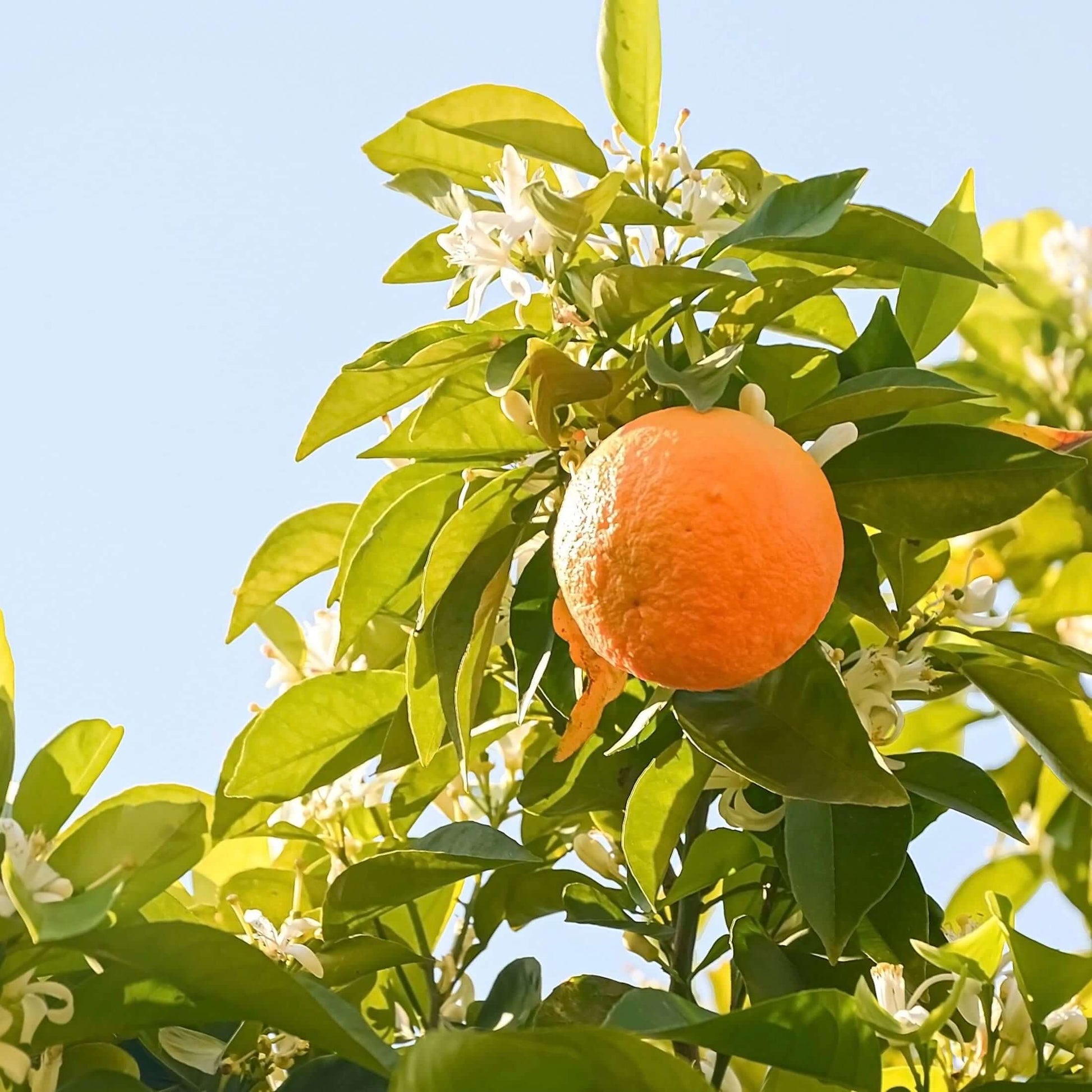
Navel Orange Tree
Citrus × sinensis 'Washington'
Delivery
24-hour money-back guarantee
Free delivery on orders over $349
Big Project? Call 888-444-1126 for bulk rates!
The Washington Navel Orange Tree is a hardy, strong, and easy to care for orange tree that is perfectly suited to add value to any garden, patio, or orchard. Popular for the juicy, sweet, large oranges, the Washington Navel is perfect for eating, juicing, or other culinary creations.
In California's mild climate, an evergreen Washington Navel tree is an excellent choice in the landscape. Self-fertile, the glossy, green leaves, bright orange fruits, and star-shaped, fragrant flowers stir the senses.
Growing fresh navel oranges requires minimal work. Order your Washington Navel tree today and enjoy life's sweet rewards.
The mature height and fruit production of your citrus tree will depend on several environmental factors such as climate, light, soil type, texture, fertility and moisture, and pruning practices. Your citrus tree can easily be maintained at a smaller size with annual pruning.
How big does a Navel Orange Tree grow?
When does the Navel Orange Tree produce fruit?
Is the Navel Orange Tree self-pollinating?
What kind of care does a Navel Orange Tree need?
Orange, Citrus
10-15 ft.
6-8 ft.
Moderate
Perfect Your Landscape With Expert Help
Customize your yard with confidence. Schedule your free consultation today and bring your outdoor space to life!



